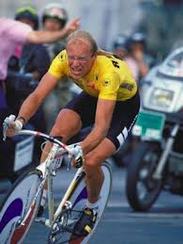 _Because of the knee injury that Fignon had sustained, he missed the 1985 Tour, and wasn’t able to finish the 1986 Tour. During the 1987, Fignon finished 7th overall. Then, he didn’t participate in the 1988 Tour. He snatched the title of being the number one cyclist in the world from Sean Kelly in the 1989 Tour.
After retiring, he managed to race to Paris-Nice until ASO took it over, which is the Tour de France’s organiser in 2004. He remains as one of the organised for several races such as Paris- Corrèze.
With regard to his relationship with Bernard Hinault and Cyrille Guimard, he stated with Hinault, Guimard already discovered a champion, but with himself, Guimard created a champion. This statement proves that his relationship with Guimard was stronger than Guimard’s bond with Hinault.
In June 2009, Fignon announced that he had advanced intestinal cancer and was receiving chemotherapy. Furthermore, he admitted using doping products when asked about the association of his past doping and cancer. He has authored a book about his life “Nous étions jeunes et insouciants" (We were young and carefree), which was published in the same month and year.
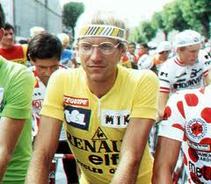 _Name: Laurent Fignon
Date of Birth: 12 August 1960
Place of Birth: Paris
Laurent Fignon is a former professional road bicycle racer who already won the Tour de France for two consecutive times in 1983 and 1984. Also in 1989, he won the Giro d’ Italia.
His first career as an athlete was football. Then, some of his friends encouraged him into bicycle racing and his very first official race was in 1976, which he won. He then won 17 races during his second season while he was in high school. When he joined the national 100km time trial race, he was discovered by Cyrilled Guimard, former manager and rider, who reserved him a spot in the Renault-Elf-Gitane professional racers.
In 1983, Fignon won his very first Tour de France. Pascal Simon lost his three-minute advantage to Fignon half-way through the 1983 race. Fignon claimed the maillot jaune two days after the tour. He was only 22 back then, making him the youngest racer who won the Tour since 1993. During the 1984 Tour, Fignon succeeded in winning the stage 7 time trial, beating Hinault on the 14th and 16th stage. Fignon also gained a three-minute advantage over Hinault on the stage toward Alpe d’Huez, and succeeded to be the first one to finish the stage at La Plagne, 20th stage from starting from Morzine to Crans-Montana, and the last time trial stage, earning him a total of five victories during the Tour.
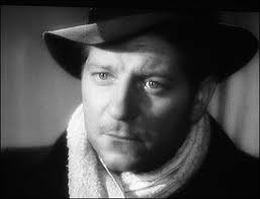 _Gabin continued rejecting Hollywood offers until the Second World War broke out. He then went to the US with Julien Duvivier and Jean Renoir after the Germans took over France, where he soon engaged in an affair with Marlene Deitrich. Unfortunately, he was not as successful in America. Gabin further damaged his Hollywood career when he inordinately demanded to let Dietrich become the co-star in a movie he was making under RKO pictures. Gabin was fired following the dispute, and the film was cancelled. He then joined the Free French Forces under General Charles de Gaulle, and received the ‘Médaille Militaire’ and a ‘Croix de Guerre’ for his bravery in combat during the fight in North Africa. Gabin returned to show business in France, but his behaviour constantly got him in trouble. Moreover, several of his subsequent films turned out poorly at the box office, and his attempts at a return to the stage failed to meet success as well. He managed to regain momentum with Jacques Becker’s ‘Touchez pas au grisbi’ in 1954. Gabin succumbed to leukaemia at the American Hospital of Paris, in Neuilly-sur-Seine. His remains were cremated and his ashes were scattered with full military honours from a military ship. He was recognised as one of the most famous actors of French cinema, and was admitted into the Legion of Honor. In Mériel, his town of birth, the Musée Jean Gabin presents his film and war memorabilia.
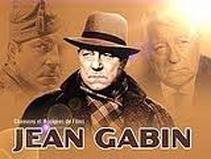 _Name: Jean Gabin Date of Birth: 1904 – 1976 Place of Birth: Paris, France Jean Gabin, born Jean-Alexis Moncorgé, was a war hero and popular French actor. Born in Paris to cabaret entertainers, he was raised Mériel village in the département of Seine-et-Oise. Gabin returned to show business after finishing his military service. He went under the stage name ‘Jean Gabin’ and accepted all offers that came his way in the Parisian operettas and music halls, mimicking the singing style of Maurice Chevalier who was very popular during that time. He joined a troupe on a tour of South America and got a job at the Moulin Rouge when he returned to France. He began attracting attention, and took on better roles on stage until he was given roles in two silent movies in 1928. In 1930, he got a part in ‘Chacun sa Chance’, a Pathé Frères production, where he showed an easy transition into talking films. Over the succeeding four years, Gabin continued taking secondary roles in over a dozen films. Gabin officially became a major star following his performance as a romantic hero in Duvivier’s war drama ‘La Bandera’ in 1936. He rejoined Duvivier the next year for ‘Pépé le Moko’, a highly successful film that achieved worldwide fame and was recognised as one of the top-grossing movies of 1937. With the movie, Gabin achieved international acclaim. He went on to star in several highly successful films, such as ‘La Grande Illusion’ by Jean Renoir.
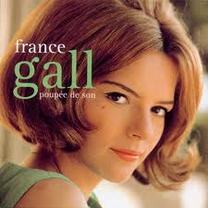 _Name: Isabelle Genevieve Marie Anne Gall Date of Birth: 9 October 1947 Place of Birth: Paris, France Isabelle Genevieve Marie Anne Gall, also known as France Gall, was born in Paris, France on 9 October 1947 to Cecile Berthier and Robert Gall. France Gall was said to have come from a musical family. Her father was a lyricist, while her maternal grandfather was one of the co-founders of the Petits Chanteurs a`la Croix de Bois. Some of her cousins included Denys Lable, who was known to be a guitarist, while Vincent Bethier de Lioncourt, was a composer. One spring day of 1963, France Gall and her siblings were encouraged by their father to render songs that were eventually sent to Denis Bourgeois. Unknown to others, Denis Bourgeois was a well known musical publisher. After their demo, France Gall decided to audition at the Théâtre des Champs-Élysées, also in Paris. Her impressive talent convinced Bourgeois to sign a contract with her, but she opted to sign one with Philips. When France was sixteen years old, she was given the opportunity to record her first single. The single, Ne sois pas si bete or Don’t be so stupid in English, was an instant hit. The said single was released in November, and was followed by another single entitled, Don’t Listen to the Idols. Surprisingly, both singles topped the March 1964 French Charts.
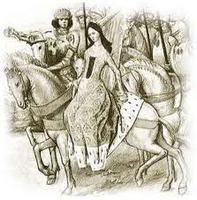 And last one, Joan of the Tower, who was born in 1321 and was married to David II of Scotland.
Although she gave birth to four children, the king, who was regarded as bisexual, was disreputable for expressing sexual attention to male favourites, and this include Hugh le Despenser the younger and Piers Gaveston. She hated Despenser and she begged her husband to expel Despenser while she was pregnant with her youngest child. After Despenser, the king had an affair with Roger Mortimer, who was married to Joan de Geneville, a rich heiress.
When King Charles IV of France, Isabella’ brother, sequestered Edward’s French wealth, she went home to France as a delegate of the King who was charged for discussing a peace treaty between the two countries. Her presence also became a central issue for the nobles who are against the reign of Edward. She then assembled an army to fight Edward, and he asked the help of Roger Mortimer, the 1st of Earl of March, to do this. Edward learned of her treachery and he demanded that Isabella must return to England.
Moreover, the plan of Isabella and Mortimer became successful. The allies of King Edward left him without engaging in battle and he was captured. He was also forced to resign in favour Edward III of England, his eldest son.
Before she died on 22 August 1358, she took the habit of the Poor Clares. Her body was buried at the Franciscan church at Newgate in London.
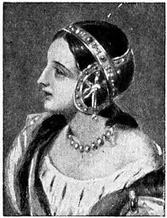 Name: Isabella of France
Date of Birth: c. 1295
Place of Birth: Paris, France
Isabella of France was born in Paris, France on an undetermined date which was estimated to be possibly between May and November 1295. Her parents were King Philip IV of France and Queen Joan I of Navarre.
Isabella was promised in marriage by her father to King Edward II of England while she was still a child. The goal of this pre-arranged wedding was to put an end to the conflicts between England and France. This misunderstanding evolved because of France’s continental entitlement of Gascony and its territorial claims to Anjou, Aquitaine, and Normandy. Pope Boniface VIII had planned that the marriage should take place as early as 1928; however, it was postponed due issues regarding the conditions of the marriage contract. Edward I, the English king, also tried to breach the engagement a couple of times. The wedding went on in 1307 after his death.
She was about 12 years old at the time of her marriage. She was described by Geoffrey of Paris as "the beauty of beauties... in the kingdom if not in all Europe."
Their marriage resulted to the birth of four children. She also said to have suffered from a miscarriage. Their children were Edward III of Windsor, who was born in 1312, John of Eltham, Earl of Cornwall, who was born in 1316, Eleanor of Woodstock, who was born in 1318 and was married to Reinoud II of Guelders.
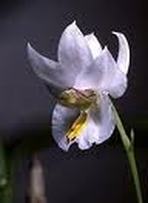 _Unfortunately, he turned the offer down; for he opted to work and care for the nursery he set up outside of Brussels. It was also in this nursery, where he was able to grow and nurture plants that were to be exported in Europe.
In so doing, Galeotti also took the time and the effort to work with Martin Martens, a botanist, regarding the different techniques used in scientific study. 1853 marked another milestone in his life, when he was made as the director of the Botanical Garden of Brussels.
Galeotti’s increasing fame was further heightened by several recognitions. Due to the impressive knowledge he had, Galeotti was able to gain the respect of the people. He became the editor for the Journal d’Horticulture Pratique in 1852, and in 1897, he produced the Bulletin de la Societe Royal d’Horticulture de Belgique et du Jardin botanique de Bruxelles.
Galeotti died in 1858, with reasons undisclosed to the public. Since Galeotti’s work was well renowned all over the world, the Mexican herbarium he formed while he was still alive came in the interest of the growing public. In 1858, the Jardin botanique de Bruxelles (Botanical Garden of Brussels) bought the said herbarium from Galeotti’s wife and widow.
As proof of his legendary contribution to the field of Botany, Henri Guillaume Galeotti’s family name was used in naming plants. The term Galeottia, a genus in the Orchidaceae family, is currently used in his honour.
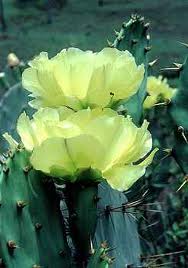 _Name: Henri Guillaume Galeotti
Date of Birth: 10 September 1814
Place of Birth: Paris, France
Henri Guillaume Galeotti was born in Paris, France on 10 September 1814. He was regarded to be of French and Belgian origins. Although he was born in France, Henri Guillaume Galeotti’s parents were Italian. As a geologist and botanist, his studies and researches were focused on the Cactaceae family.
Galeotti studied at the Etablissement Geographique de Bruxelles, and graduated in 1835. In the said institution, he gave much time and effort in studying natural history and geology. Galeotti’s hard work and determination brought about recognitions in his dissertation regarding the Brabant geology.
After graduating from college, Galeotti spent the next five years of his life conducting studies and researches in Mexico. Since his specialisation was the Cactaceae family, he focused his studies on the different cacti.
At the prime of his life, Galeotti was able to produce several accomplishments that helped him in his quest for further education. While in Mexico in August 1838, Galeotti and his group of botanists were able to set boundaries and make records, as he was able to produce the earliest recorded rise of the Pico de Orizaba.
Moreover, his impressive skills and knowledge did not fail to catch the attention of the many. In 1840, the University of Brussels offered Galeotti the opportunity to be a Botany instructor in their institution.
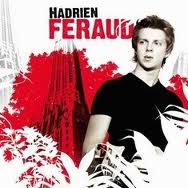 _Excited to meet new people, he performed in a number of contests like ‘Euro Bass Day 2003, which was held in Verona. He was declared the winner of this competition. He also joined the ‘Haut les Basses’ contest in 2004. Before 2004 ended, Feraud began composing music for his maiden solo masterpiece as he played in different jams and clubs in Paris. Back in 2005, Feraud was invited by John McLaughlin to collaborate with him on two tracks (‘For Jaco’ and ‘Senor CS’) included in his album ‘Industrial Zen’. This encounter was crucial for Hadrien. He finished his debut solo album ‘Hadrien Feraud’ in 2006. It was graced by several prestigious guests like John McLaughlin, Flavio Boltro, Bireli Lagrene, Jean-Marie Ecay, Marc Berthoumieux, Jean-Pierre Como, Jim Grancamp, Mokhtar Samba, Dominique di Piazza, Jon Grancamp, Thierry Eliez, and Linley Marthe. In 2007 he contributed to Chick Corea's trio project. After his first solo album, he toured in Canada and North America. It was followed by a European tour in 2008. He was then a member of 4th dimension (together with Mark Mondesir on drums and Gary Husband on keys) and John McLaughlin. Ken Smith and Hadrien Feraud announced ‘Hadrien Feraud Signature Burner’ in last September. It was to be created in Japan. Hajime Hirose and SleekElite will be responsible for its creation. Ken Smith will be the director. Hand-made models of this are set for release early in 2010.
|










 RSS Feed
RSS Feed